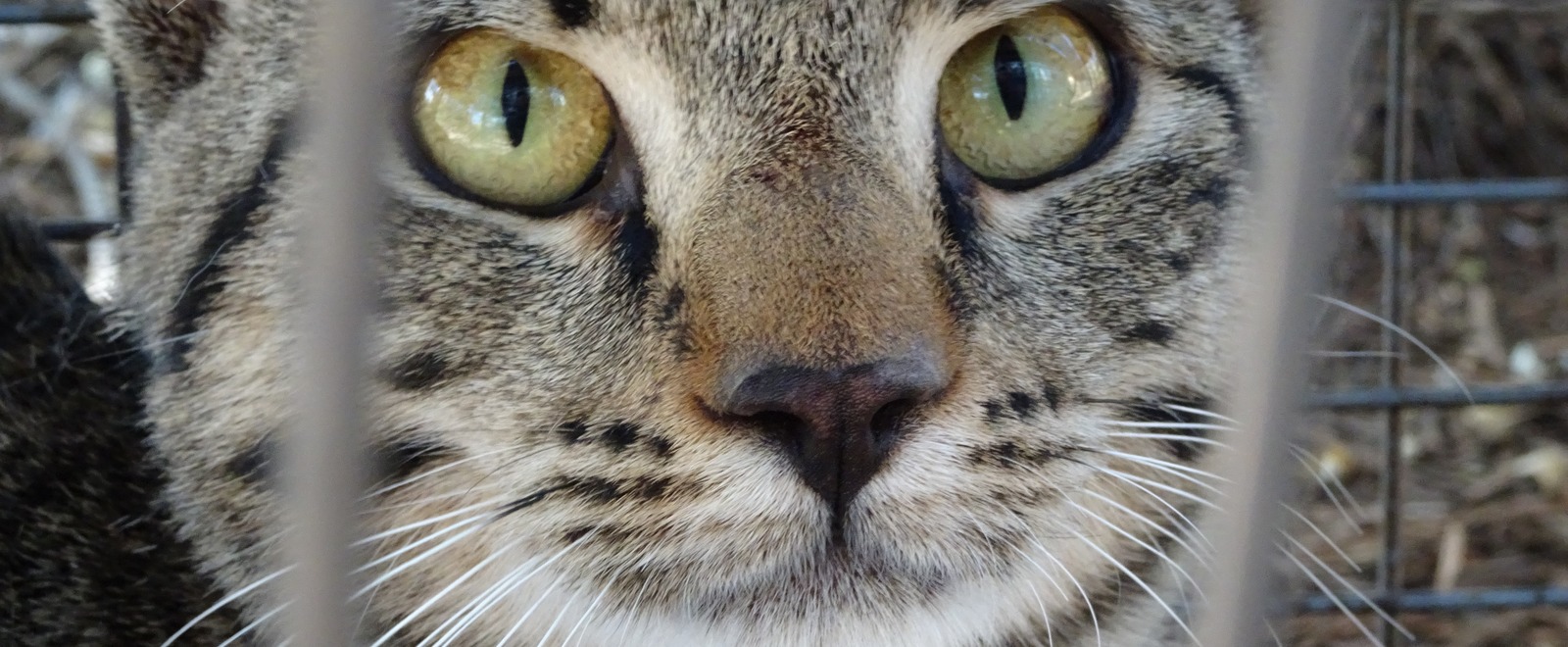Feral Cat Trapping

Why Are Feral Cats a Problem?
The introduction of cats (Felis catus) to Australia is considered to be one of the most significant conservation issues in Australia. Few native mammals are equipped to effectively avoid predation by cats. Cats are obligate carnivores, requiring high quantities of protein, including the essential amino acid Taurine. In addition, cats will often hunt birds and reptiles through instinct, even if their dietary needs are being met. While they have been known to feed on invasive mammals such as mice and rabbits, they also prey on native wildlife.
In Australia, the extinction of several species has been primarily linked to cats. In addition, cats have been implicated as a threat to 74 mammals, 40 birds, 21 reptiles and 4 amphibians. This includes 27 species on the IUCN Red List of Threatened species, 17 of which are also listed under the EPBC Act. At a local scale, there are 13 extinct native species and 12 currently threatened native species, for which cats are listed as a threatening process.
Predation by feral cats is listed as a key threatening process to the survival and abundance of native species and the Commonwealth Government have developed a threat abatement plan for predation by feral cats. The plan aims to guide management via four key objectives: Effectively control feral cats in different landscapes, improve effectiveness of existing control options for feral cats, develop or maintain alternative strategies for threatened species recovery, and increase public support for feral cat management and promote responsible cat ownership. Land for Wildlife is working with domestic cat owners in central Australia to address responsible cat ownership (Domestic Cat Monitoring and Awareness), as well as with the general public to address feral cat trapping to reduce populations.
Want more information on feral Cat history, ecology, impact and control? Check out the Australian Government’s Department of the Environment and Heritage Feral Cat fact sheet.
Reduce Feral Cat Populations
Feral cat populations can be partially controlled through an active trapping program and appropriate management of domestic cats (Domestic Cat Monitoring and Awareness).
Entire cats (those that have not been desexed/spayed/neutered) have the ability to contribute to the feral cat population through mating activities. Desexing cats can help prevent this from occurring. If your domestic cat is not desexed and it falls pregnant, do not dump unwanted kitten litters in the bush – ensure that they are taken to the Alice Springs Animal Shelter (Ph 08 8953 4430) for rehoming. Note that domestic kittens should not be sold through the public domain, and we encourage willing cat owners to select their new pets from shelters or registered breeders.
Domestic cats have the ability to add to the feral cat population directly by becoming feral if ownership status changes. Ensure that any unwanted domestic cats are rehomed personally or taken to the Alice Springs Animal Shelter (Ph 08 8953 4430) for rehoming. Register your cat to ensure that if it does stray from home, that it can be reunited with you.
Trap Loans
Land for Wildlife has feral cat traps for loan. Please contact us to check for availability and arrange pick up or delivery. If we don’t have any cat traps available, you can also contact the Alice Springs Town Council Ranger Unit (Ph 08 8950 0500), who also loan traps to local residents (Animal Management).
We request that you complete a Feral Animal Trapping Agreement before using any Land for Wildlife traps.
For feral Cat trapping information, including trap placement, baiting, checking the trap, disposal of cats and post-trapping information, download our Cat Trapping fact sheet.
If you are having difficulty setting the trap, please view the instructional video below:
Once you begin a trapping program, please fill out a Catch Record Form, which will assist us with keeping tabs on feral animal trapping needs.
Disposal of Cats
Use gloves to pick up the cage and don’t allow fingers to go inside the cage where they are at risk of being bitten or scratched. To transport the cat, leave it in the trap with a blanket or towel covering the outside to help calm the animal. When releasing the feral cat into the holding cage, be sure to face the trap away from you so avoid injury.
We strongly recommend that all feral cats are taken to the Alice Springs Animal Shelter (Ph 08 8953 4430). Feral cats delivered to the Alice Springs Animal Shelter are kept for a period of time to ensure that they are not collected as domestically owned cats; and if unclaimed, are euthanized humanely.
If you are unable to deliver the cat to the shelter yourself, you can also contact the Alice Springs Town Council Ranger Unit (Ph 08 8950 0500), who can arrange pickup and disposal.
If you are in a right pickle, call Land for Wildlife or Low Ecological Services (Ph 08 8955 5222) and we may be able to deliver them to the Alice Springs Animal Shelter for you.
Trapping Ethics
Before trapping begins, it is wise to make yourself aware of the Ethical Considerations of Trapping.
We recommend that persons undertaking trapping activities make themselves aware of the Animal Welfare Act and their obligations under the law, and to be mindful of the welfare, health and safety of all animals whilst conducting trapping programs.
